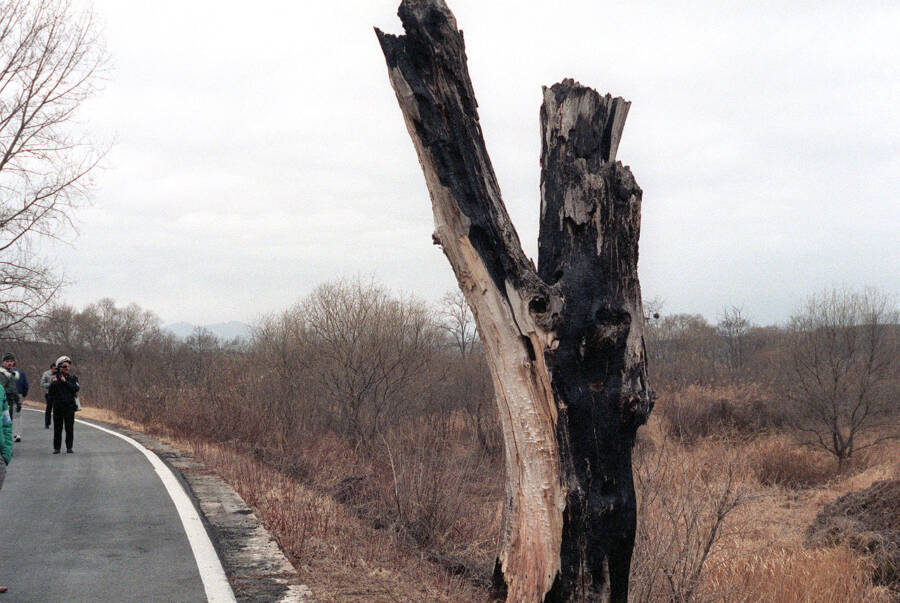Operation Paul Bunyan: When The U.S. And North Korea Almost Went To War Over A Tree

Wayne JohnsonHundreds of troops flooded the Joint Security Area to chop down the tree, with significant backup.
After North Korean soldiers killed two American soldiers who were trimming a tree in the Joint Security Area within the Korean Demilitarized Zone in 1976, President Gerald Ford ordered an overpowering use of force. Raising America’s defense readiness to DEFCON 3, he commanded the military to cut down the tree.
This government operation, dubbed Operation Paul Bunyan, was risky. Though the Korean War had unofficially ended 23 years earlier, tensions between North and South Korea remained high. Ford had to weave a delicate path between avenging the dead soldiers and avoiding a new conflict.
On Aug. 21, 1976, three days after the soldiers were killed, American and South Korean forces marched toward the Demilitarized Zone. According to Politico, they included 23 trucks filled with chain-saw-wielding soldiers, two security platoons, South Korean special forces, 27 American helicopters, several fighter jets, and an aircraft carrier battle group.

Public DomainRemains of the tree, which U.S. and South Korean forces purposefully left as a stump. The tree was replaced with a monument in 1987.
At first, North Korean troops seemed prepared to respond. But as helicopters buzzed overhead, they stood down. For 40 minutes, U.S. and South Korean troops worked on cutting down the tree, using only chainsaws because they feared heavier equipment would hinder a quick escape.
“We have to use a ladder to get up into the tree,” Charles Twardzicki, then a 25-year-old sergeant 2nd Engineer Battalion explained to the BBC. “We got one guy on the headache board [behind the truck’s cab] cutting one, and I’m cutting another. His chainsaw is about where my head is.”
After they’d completed their job, the U.S. and South Korean troops left. A few hours later, North Korean leader Kim Il Sung issued a rare statement that, while short of an apology, did imply regret on the side of North Korea for the deaths of the two American soldiers.
The stump remained in place until 1987, when it was replaced with a monument dedicated to Captain Arthur Bonifas and Lieutenant Mark Barrett — the last two American soldiers killed in Korea.





